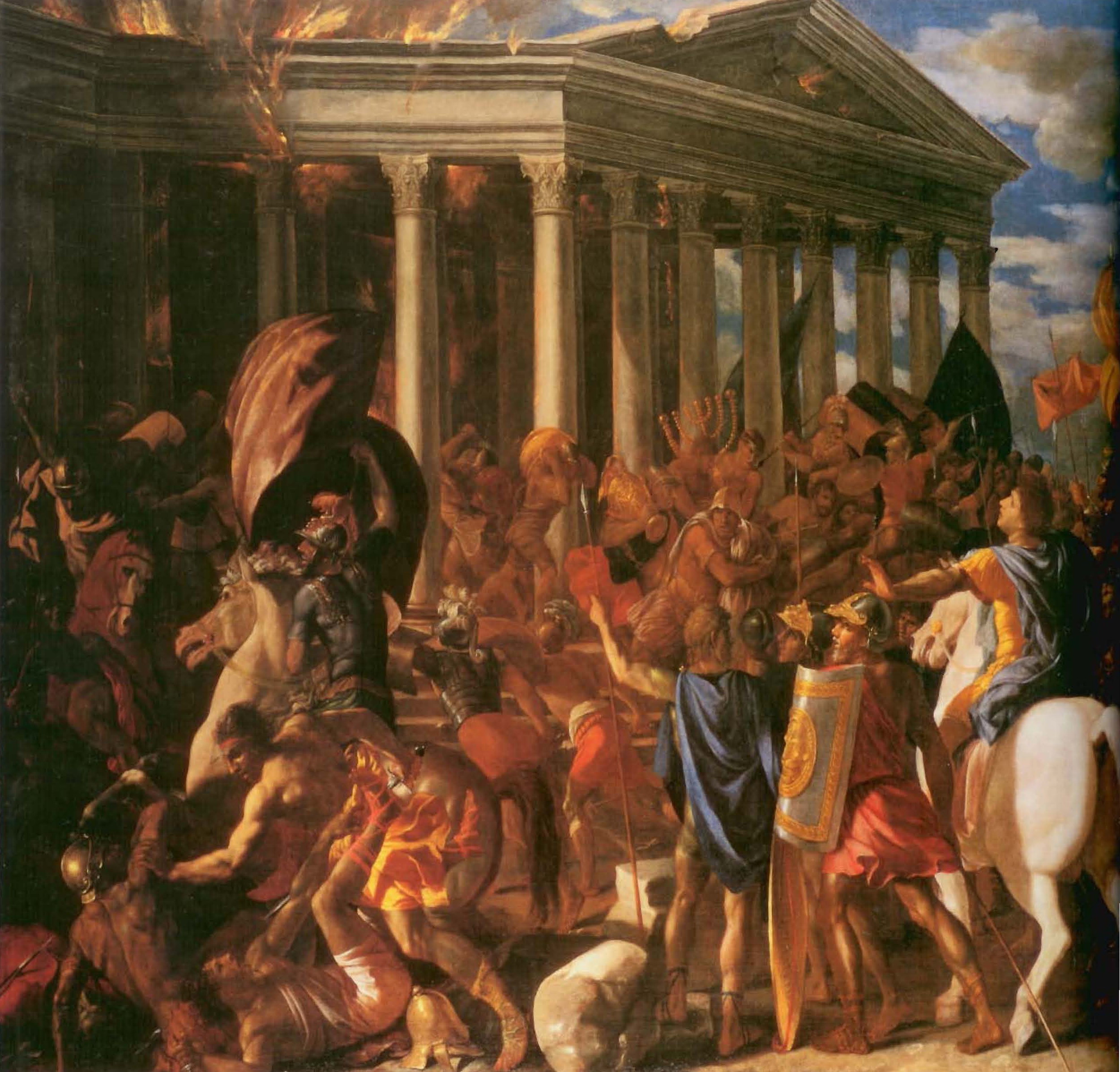Nicolas Poussin’s Destruction of Jerusalem, 1625-26
Nicolas Poussin, The Destruction and Sack of the Temple of Jerusalem 1625-26
Oil on canvas
Nicolas Poussin was the foremost exponent and practitioner of seventeenth-century Classicism. The composition of The Destruction and Sack of the Temple is divided between the image of the Temple engulfed in flames in the background and the chaotic struggle, dominated by the striking figure of Titus on his white mount, in the foreground. A sense of drama, with the clash of arms and flashes of golden light from the Temple vessels, suffuses the entire work.
Classical Roman architecture and sculpture provided sources for Poussin’s painting. This work, dating from his early Italian period, was the first to draw public attention to him and is recognized as a milestone in his brilliant career. The events depicted in it seem to take place in a Roman city- the soldiers’ dress is taken from reliefs on Roman sarcophagi; the façade of the Temple resembles that of the Pantheon; the figure of Titus was inspired by the equestrian statue of Marcus Aurelius in the Capitoline; and the menorah derives from the famous depiction on the Arch of Titus. The scene is based on the writings of Josephus Flavius, the Jewish leader who won the favors of the Romans and witnessed the conquest of Jerusalem and the destruction of its Temple. In his chronicles of the events, The Jewish War, he describes Titus as an enlightened leader who tried unsuccessfully to prevent the ruin of the holy city- “Caesar shouted and waved to the combatants to put out the fire; but his shouts were unheard as their ears were deafened with a greater din, and his hand-signals went unheeded amidst the distraction of battle and bloodshed.”
This work was commissioned by Poussin’s patron Cardinal Francesco Barberini, nephew and secretary of Pope Urban VIII, and was offered as a gift to Cardinal Richelieu, the French head of state. Barberini led a papal legation in a vain attempt to reconcile France and Spain, at the time engaged in a bloody war. Poussin draws a parallel in the painting between his patron, the would-be peacemaker, and the enlightened pagan emperor Titus. After Richelieu’s death, the painting changed hands many times and eventually reached England. Its whereabouts were unknown from the late 1700s until 1995, when it was rediscovered by the art historian Sir Denis Mahon, covered in layers of lacquer and dust, and presented as the work of a minor artist depicting the conquest of Carthage. Restored to its original state, it was donated to the Israel Museum in 1998, thus returning “home” to the site in which the events it describes originally took place.
The Israel Museum at 40, Masterworks of Beauty and Sanctity. Jerusalem- The Israel Museum, 2005.






